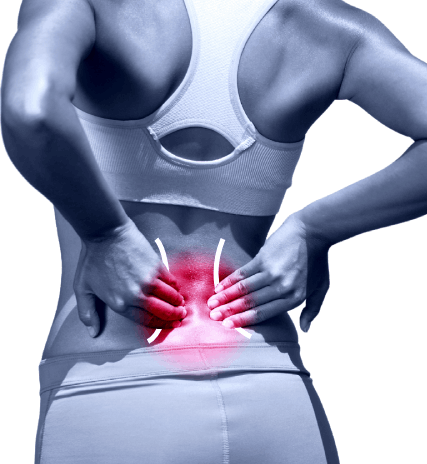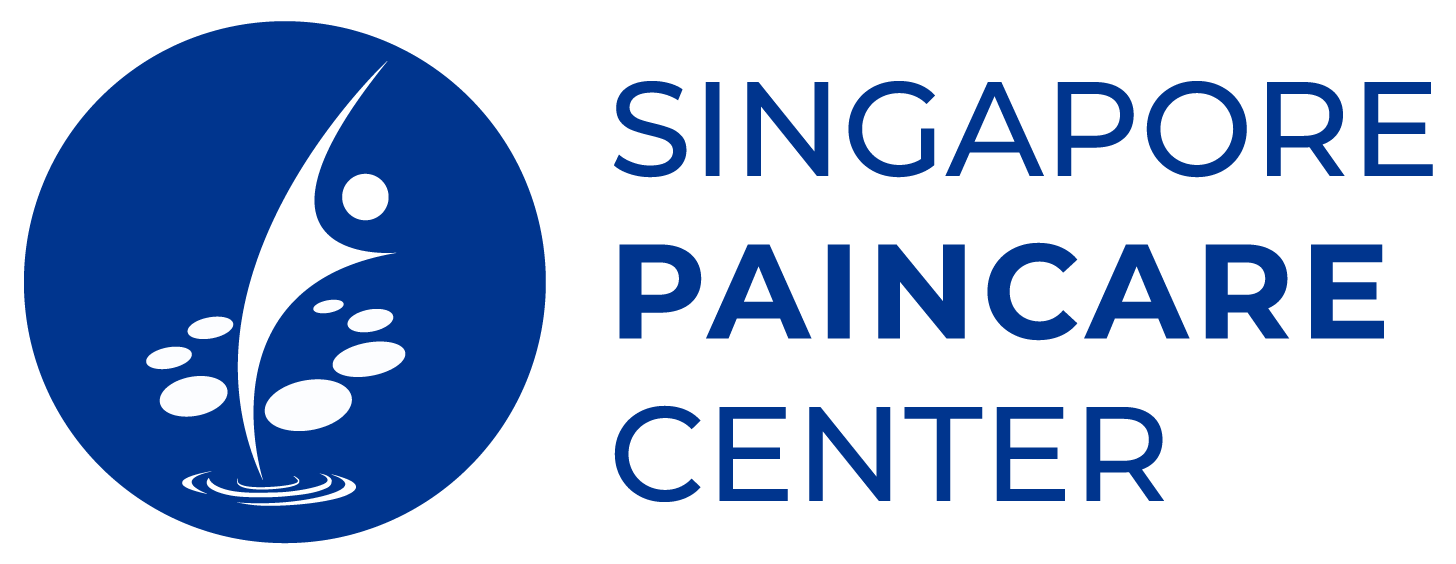Lower Back Pain
About Lower Back Pain
Lower back pain in Singapore is extremely common. Almost every person will have at least one episode of low back pain at some time in his or her life, hence the chances of seeking treatment in either back pain clinic in Singapore or in a family clinic is common. The pain can vary from severe and chronic to mild and short-lived.
For most people, it will resolve within a few weeks. However, in 30% of patients, this back pain may be a sign of something serious.

Causes of Lower Back Pain
Patients with low back pain are often plagued with frustrations, confusion and distress. Seeking back pain treatment in Singapore, depending on whom they consult (orthopaedic, neurosurgeon, traditional medicine practitioner, physiotherapist and chiropractor), they may be told different things, ranging from muscle strain, bone degeneration to spinal pain. Lower back specialists in Singapore have many ideas about what causes low back pain, but no single explanation applies to everyone. No one back pain is the same as another. The causes of low back pain can be very complex, as there are many structures in the back that can cause pain.
Prolapsed Disc/ Slipped Disc
Impingement of Spinal Nerve Roots
Disc Inflammation and Degeneration
Facet Arthropathies/Spondylosis
Pathological conditions of the vertebral body
Spinal degeneration
Spinal degeneration, such as scoliosis and spondyloslisthesis, can result in significant structural problems, such as curvature of spine. This can cause narrowing of the spinal canal internally or increased muscle tension and spasm externally.
Combination of Different Conditions
Low back pain may be related to ageing. As a result of wear-and-tear on the spine, ligaments and discs, increased pressure applied axially (by excessive lifting of a load), a disc may begin to protrude or collapse and put pressure on the nerve root leading to a leg or foot, causing pain in those areas (sciatica).
The problem can be aggravated by associated conditions, such as:
- Excessive stress to the back, such as lifting something heavy
- Excessive weight gain, with poor surrounding abdominal muscles
- Minimal movement, such as bending or reaching for something
- Problems with tendons or ligaments in and around the spine
- Malpositioning of vertebrae
Occasionally, back pain happens with no cause. There may not be a trauma or any injury sustained by the patient. Nonetheless, the pain is real and needs to be treated. Otherwise, the back pain can slowly and progressively become chronic and disabling. Advance investigations with X-ray may not pick up any abnormalities in the spine. Muscle sprain resulting in back pain can be present this way and not show up in any investigations. These conditions, while they may be disabling, will need other less invasive treatment rather than surgical approaches.
Symptoms of Lower Back Pain
Pain is felt only when flexing or extending their back. Most people find that lying down will improve their pain and, after their initial severe episode, many will be able to rest at night without severe pain. Most people experience more severe pain when they lift or carry something heavy. Some get relief from extending the back. Leg pain also can be part of the problem. The pain is most common in the back or outer side of the thigh, and can go all the way to the foot. Pain that goes to the foot is called sciatica because it is pain that follows the course of the sciatic nerve. Sciatica is often made worse by coughing, sneezing or straining.
For about 60% of back pain, the acute episode of back pain can be very severe for a few days or a week and then will often improve. By the second to fourth week, most people get better. The cause of this type of pain is usually injury to the muscles or ligaments. The remaining 40% of patients can have disabling pain flare without getting better, including disabling effects interfering with standing, sitting and walking, resulting in hospitalization and medicalisation. These patients usually have a spine disorder, involving nerves, discs and facet joints. The length of time between episodes of pain flare varies greatly from person to person, as does the length of each episode, the intensity of each episode, and how well each individual copes with the pain.
Diagnosing Lower Back Pain
See your lower back pain doctor in Singapore to diagnose your condition. Tell him your complete medical history. It is important to identify the site of primary pain (maximum local pain site) as well as secondary pain (diffused, non-discrete pain). The physical examination may yield neurological signs with motor and sensory deficit. The back pain doctor / back pain specialist will check for:
- Evidence of nerve problems – The doctor evaluates strength, sensation and reflexes. He or she may ask you to move your spine to see how limited the motion is.
- Poor blood circulation – Although not related to the spine, poor blood circulation can lead to back pain. Tell the doctor what activities aggravate or improve your symptoms.
- Injury to the spine and the integral supporting elements.
- Muscle spasm affecting posture and alignment of spine – Tell the doctor what motions or positions hurt and what helps relieve the pain.
These symptoms indicate a serious medical condition requiring urgent medical attention and possibly surgery:
- Sudden bowel and/or bladder incontinence
- Progressive weakness in the legs
- Severe, continuous abdominal and low back pain (possibly leaking blood vessel)
- Back pain with fever and chills
- History of cancer with recent weight loss, or those who have just suffered a severe trauma should also seek immediate medical attention
Treatment Options
Non-surgical Treatments for Lower Back Pain
- Rest
A few days of rest can often calm the pain down as well. Prolonged bed rest (more than 2 to 3 days) is no longer generally recommended for people with low back pain. - Braces
Although there is minimal scientific evidence of their effectiveness in treating low back pain, back braces are commonly used. Most common is a corset-type brace that can be wrapped around the back and abdomen. People who use corset-type braces sometimes report feeling better supported and more comfortable. Short-term use has its benefits, but chronic use has more disadvantages than advantages. - Local Muscle Injections
The most commonly-used injections are local anaesthetic, hypertonic glucose and/or steroids. They are usually given either in the area that is believed to be the source of the pain, such as into a muscle or ligament. Once the muscle is deactivated, and inflammation is removed, the painful area is allowed to heal and recover. - Exercise and Stretching
Exercising to restore motion and strength to a painful lumbar spine can be very helpful in relieving pain. Although there is controversy as to which are the most effective spine exercises, it is generally agreed that exercise and stretching should be both aerobic (aimed at improving heart and lung function) and specific to the spine. Aerobic exercises include walking, jogging, swimming and cycling. In principle, exercises done should be both strengthening and stretching. - Proper Posture and Lifting Technique
Bending over improperly to lift an object can cause a large increase in strain on the low back. Proper lifting keeps the back straight while bending with the knees.
Minimally Invasive Treatment (Interventional Pain Procedures)
- Needle Laser Decompression
Through a needle, a laser wand is inserted into the spine to decompress the intervertebral disc. - Needle Ballooning Decompression
Through a needle, a balloon catheter is inserted into the spine to decompress the narrowed area of the spine. This is likened to ballooning of a narrowed blood vessel.
Surgical Treatment Options
- Laminectomy Decompression
Open surgery – A segment of the bone of the spine is cut off to allow space for the nerves to be freed. - Instrumental Fusion of spine
Screws and plates are fused with the spine to cause a rigid structure, preventing mobility, hence, no movement – no pain.
Prevention
Low back pain caused by lifting can be prevented by using proper lifting techniques and by exercising regularly to improve muscle strength and overall physical condition. The normal effects of ageing that result in loss of bone mass and decreased strength and elasticity of muscles and ligaments cannot be avoided.
However, the effects can be slowed down by:
- Exercising regularly to keep the muscles of the back strong and flexible
- Using the correct lifting and moving techniques
- Maintaining a proper body weight; being overweight puts a strain on the back muscles
- Avoiding smoking
- Maintaining a proper posture when standing and sitting; don’t slouch
Get Your Pain Resolved
Send your enquiries or consult our pain experts today.


